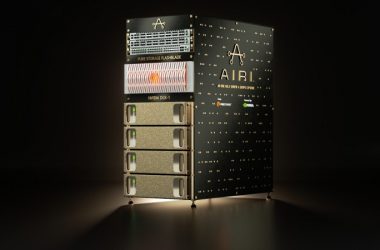
Soldiers may go into battle better prepared to handle equipment and with a greater knowledge of their surroundings after an intellectual property licensing deal Monday between Microsoft and Lockheed Martin that will deepen the defense giant’s access to visual simulation technology.
The intellectual property agreement between the two focuses on Microsoft ESP, a games-based visual simulation software platform for the PC.
Lockheed Martin is the first company to license the technology since Microsoft shut down its own ESP business in January 2009 as part of its cost-cutting moves and staff layoffs.
ESP was produced by Microsoft’s Aces Studio and is based on Flight Simulator X technology. Development of ESP ceased in January, but Microsoft is licensing the technology in the hopes partners will build on the platform, which is what Lockheed Martin intends to do.
"The intention is to take current ESP capabilities beyond flight, which is what it has been primarily used for in the past," says Chester Kennedy, vice president of engineering for Lockheed Martin Simulation, Training and Support. "The scope could potentially expand to include ground and civil applications."
He did not expand on the concept but ESP can provide all sorts of weather, terrain and other data to simulate an environment. The ESP platform provides real-time weather, seasons, continuous time of day, and a variety of lighting effects to enhance realism. It also includes extensive elevation data, land class data, terrain textures, 3-D scenery objects, and realistic vehicle and building models.
With the technology, Lockheed Martin could produce a visual simulation of a combat airfield erected in a war zone, including simulation of the local weather patterns.
On Monday, Lockheed Martin demonstrated at the Interservice/Industry Training, Simulation and Education Conference its first ESP-based by-product, the Pilatus PC-12 desktop trainer, which provides mission rehearsal capabilities. The PC-12 is a single-engine turboprop passenger and cargo aircraft.
"While Lockheed Martin has in-house leading simulation technologies across many domains, and at various levels of fidelity, we identified a gap with regard to a unified PC-based platform with a worldwide database, and general configurability," Kennedy says. "ESP is highly complementary to the rest of our technology portfolio."
He says the company has been using ESP for a variety of customer and in-house lab application since ESP was launched in 2008. And the company has used products from Microsoft such as Flight Simulator for even longer. "Some of Lockheed Martin’s flight programs are currently using the technology for quick turn needs for aircraft familiarization applications," he adds.
Lockheed Martin was one of Microsoft’s original customers for its ESP product. But ESP fell under the axe when it did not make the cut as a "high priority project" as Microsoft cut costs and programs back in January.
"What we have done is say, ‘let’s take the technology base and let some of our strongest partners investing in it take this platform forward," says David Kaefer, general manager of IP licensing for Microsoft. "They plan to mature this product under the Lockheed brand."
Kaefer would not talk about the details of the deal but said Microsoft gets "financial consideration" from Lockheed Martin. "The deal allows [Microsoft] to use this technology, perhaps license this further. We are talking to other companies," Kaefer says.
The agreement, which builds on the existing Microsoft/Lockheed Martin Strategic Alliance, provides Lockheed Martin with access to the entire ESP technology portfolio.
Microsoft licenses technology to Lockheed Martin for solider prep tools based on Microsoft simulation technology





